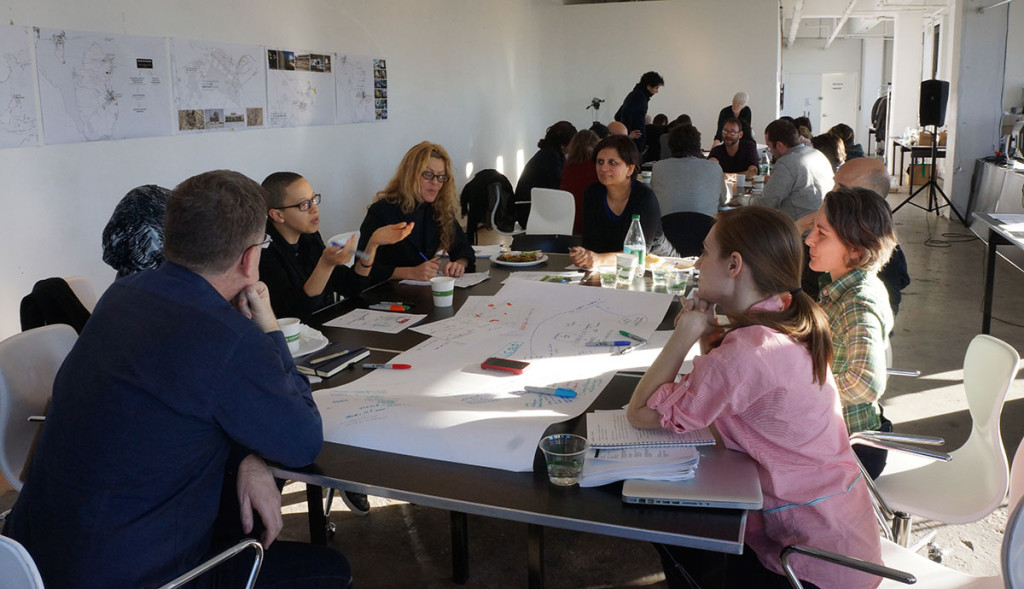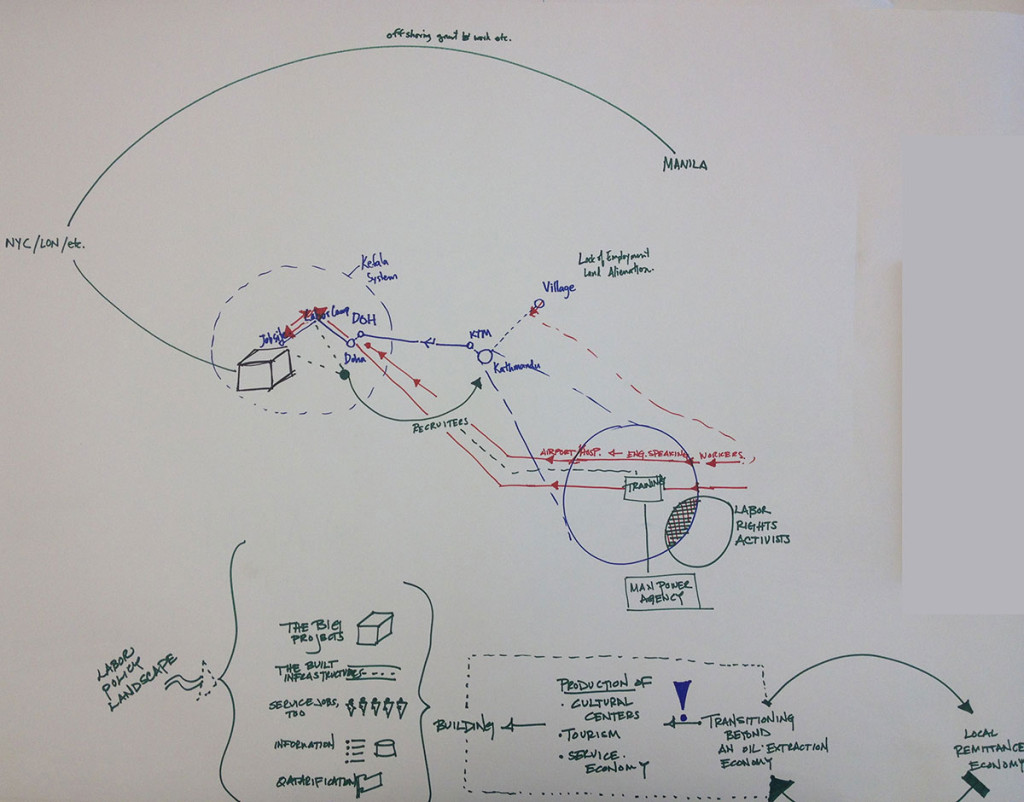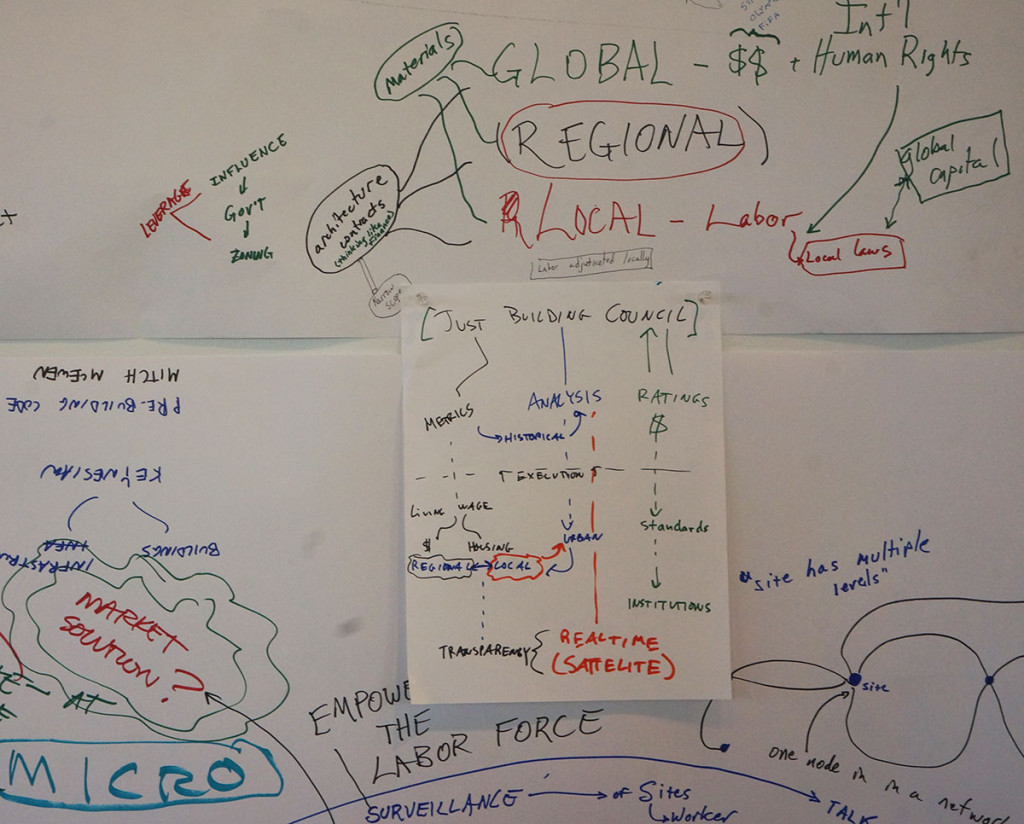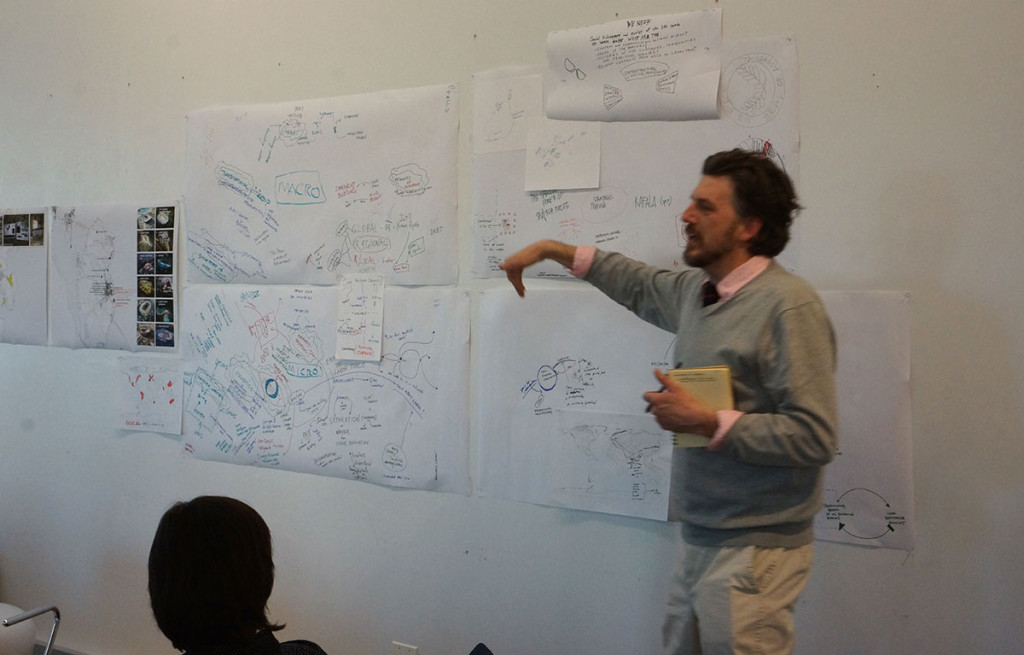WORKshop 1: The Worker: From Homeland to Jobsite
The Worker: From Homeland to Jobsite brings together architects and urban planners with labor and human rights activists, scholars, artists, and students to learn about and address problems faced by those in architecture and construction who work on large scale building projects around the world. The workshop is organized as a charrette, where different constituents can draw out ideas—literally and figuratively—about creating resources, defining common language, and proposing methods for moving forward in our goals to educate architects about labor conditions on construction sites and associated spaces such as workers’ housing. Understanding that the construction process involves many different actors and is incredibly complex we have set up our working process in the workshops as a way to quickly test ideas and slowly build on those techniques to achieve a body of knowledge and resources. After an introduction to the WORKshop, participants joined one of three groups: Migration, Housing Workers, and Site Conditions. Migration: Mapping Routes and Rights Much like architecture, construction is an increasingly global industry. While the discourse of rights—workers’ rights and international labor law—has shaped the debate on the problems faced by migrant construction workers, WBYA? proposes that many of the problems they face are inherently spatial ones. This working group will study the flows, blockages, and redirections that happen along routes of migration. Our working case study will be based on examples of migrant construction workers moving in and out of Doha, Qatar. The working group will seek to understand how the relationships between subcontractors, labor recruiters, and workers are governed by the kafala sponsorship system. Key questions addressed within this working group are: how can these routes of movements be mapped so that the roadblocks can be identified? What are the places and institutions where workers can find adjudication for unfair treatment and where are these sites located in relation to the jobsite and the camp? What can we learn from the flow of remittances and their impact at home and on the homeland? As architects how can we imagine new forms of civic spheres and public spaces for the non-citizen or rather the global citizen? Housing Workers: New Architectural Standards One of the most pressing issues with migrant construction labor is the availability of adequate housing. Workers are subject to overcrowded dormitory like accommodations with inadequate spaces for socializing, bathing, cooking, and recreating. The overcrowding of ten men in dormitory style rooms designed for no more than four is also common practice. Problems with accommodations range from sporadic food delivery services, unsanitary kitchens and bathrooms, and lack of maintenance and cleaning services. Electricity and water shortages, exposed sewage, and poor to nonexistent air conditioning are the legion of problems plaguing many worker camps. WBYA? makes the claim that migrant worker housing should be a design consideration when dealing with the administration of a project and site. Working within the given recommendations of the Qatar Foundation, this working group asks architects to interpret the recommendations into a more spatial understanding of worker housing rights. How can the unique position of the architect be used to help guide housing decisions, from design and construction, to logistics and implementation? Rather than thinking of housing as an offsite problem is it something that can be thought an integral part of how the ‘jobsite’ is planned? By using a set of pre-determined and/or modular housing units, can best-practices be established to bring housing conditions within the jurisdiction of a design project? Key questions addressed in this working group will be to consider how design considerations impact the amount and nature of onsite labor. How are projects staffed all the way down to the sub-contractor? Where are these workers being housed, and how can the architect make recommendations and provide resources to help guide housing policy on site? Site Conditons: The Worker Environment In addition to the stadia being planned for the World Cup, the country of Qatar has had to invest in large scale infrastructure development including roads and transportation systems, and hotels and urban development. In addition to the abuses found in the systems of migration and housing, workers often labor under extreme temperatures, long hours, and unsafe site conditions. The purpose of this working group is to focus directly on the construction site. More specifically, we will look at the relationship between design, architectural management and site conditions and how the architect can work to address unsafe working conditions. The goals of the working group are to identify important international labor regulations and design tools that allow the architect to both take them into account from the beginning of the design process, and also monitor them through site visits and the construction process. Taking this into account, key questions addressed within this working group are: How can architects think of the ‘site’ from the beginning of the construction process to the end? What are the facilities and resources required to operate a safe jobsite? How can the architect influence construction and site planning in order to take account of these needed facilities and resources? How can the architect document and acknowledge unsafe conditions at the site? WBYA? WORKshop at Studio-X New York, GSAPP |



